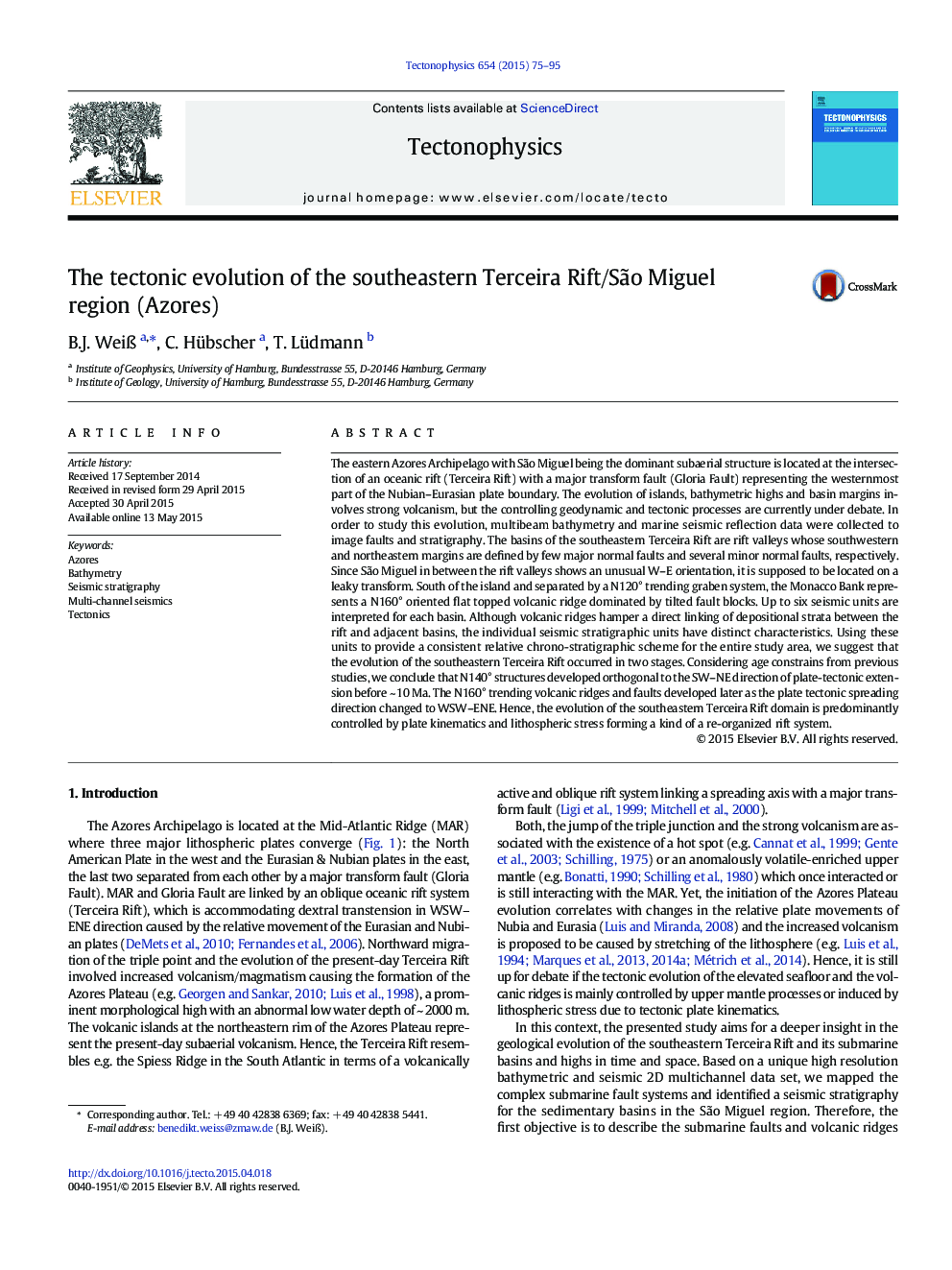| کد مقاله | کد نشریه | سال انتشار | مقاله انگلیسی | نسخه تمام متن |
|---|---|---|---|---|
| 6433653 | 1636741 | 2015 | 21 صفحه PDF | دانلود رایگان |

- We present a new high resolution bathymetry and reflection seismic data set.
- Bathymetric data indicates shift in spreading direction.
- Relative tectono-stratigraphic model for the last 10Â Ma is presented.
- São Miguel evolved along leaky transform.
- Evolution of Azores Archipelago is predominantly controlled by plate kinematics.
The eastern Azores Archipelago with São Miguel being the dominant subaerial structure is located at the intersection of an oceanic rift (Terceira Rift) with a major transform fault (Gloria Fault) representing the westernmost part of the Nubian-Eurasian plate boundary. The evolution of islands, bathymetric highs and basin margins involves strong volcanism, but the controlling geodynamic and tectonic processes are currently under debate. In order to study this evolution, multibeam bathymetry and marine seismic reflection data were collected to image faults and stratigraphy. The basins of the southeastern Terceira Rift are rift valleys whose southwestern and northeastern margins are defined by few major normal faults and several minor normal faults, respectively. Since São Miguel in between the rift valleys shows an unusual W-E orientation, it is supposed to be located on a leaky transform. South of the island and separated by a N120° trending graben system, the Monacco Bank represents a N160° oriented flat topped volcanic ridge dominated by tilted fault blocks. Up to six seismic units are interpreted for each basin. Although volcanic ridges hamper a direct linking of depositional strata between the rift and adjacent basins, the individual seismic stratigraphic units have distinct characteristics. Using these units to provide a consistent relative chrono-stratigraphic scheme for the entire study area, we suggest that the evolution of the southeastern Terceira Rift occurred in two stages. Considering age constrains from previous studies, we conclude that N140° structures developed orthogonal to the SW-NE direction of plate-tectonic extension before ~ 10 Ma. The N160° trending volcanic ridges and faults developed later as the plate tectonic spreading direction changed to WSW-ENE. Hence, the evolution of the southeastern Terceira Rift domain is predominantly controlled by plate kinematics and lithospheric stress forming a kind of a re-organized rift system.
Journal: Tectonophysics - Volume 654, 18 July 2015, Pages 75-95